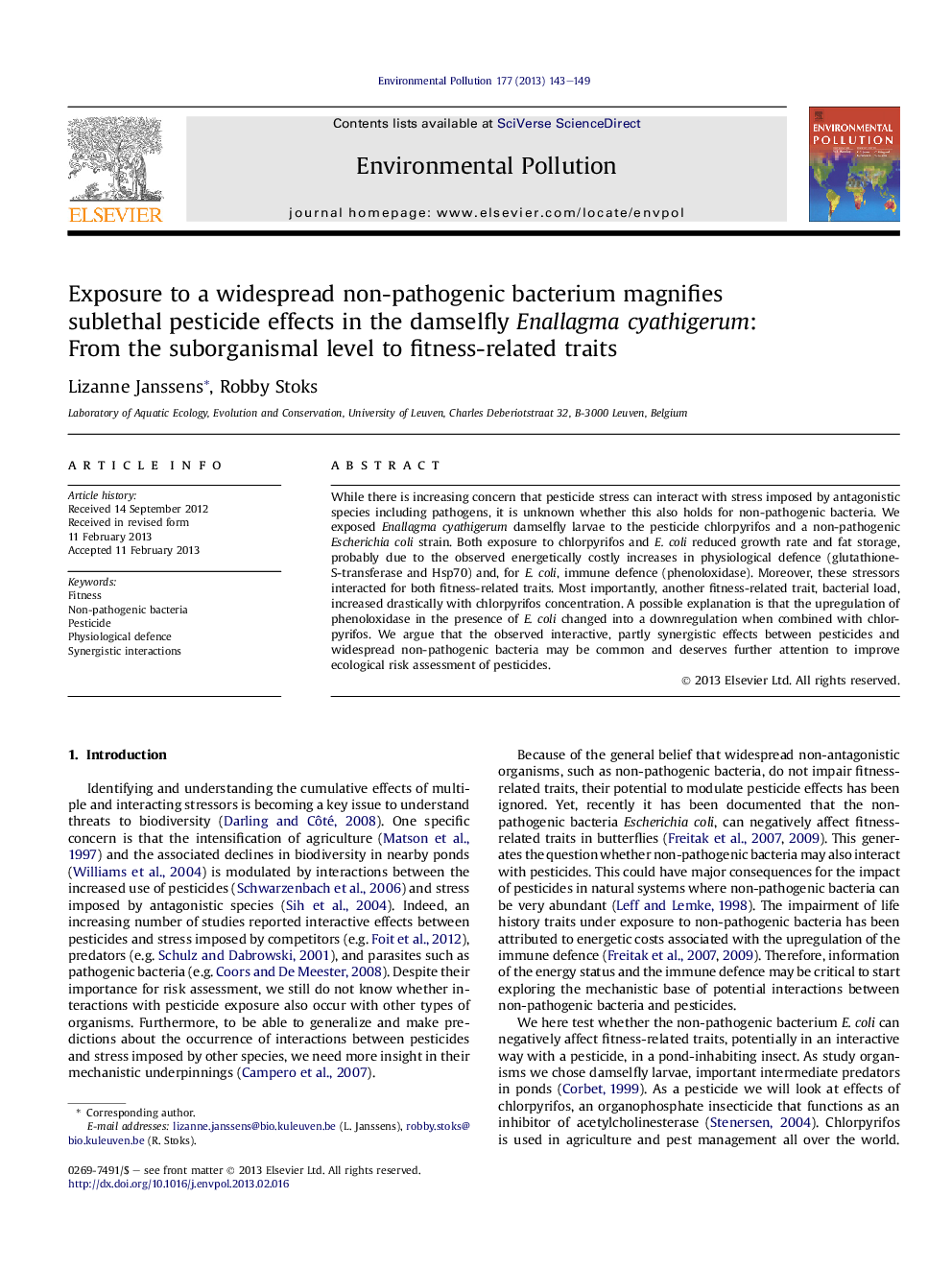| Article ID | Journal | Published Year | Pages | File Type |
|---|---|---|---|---|
| 4424622 | Environmental Pollution | 2013 | 7 Pages |
While there is increasing concern that pesticide stress can interact with stress imposed by antagonistic species including pathogens, it is unknown whether this also holds for non-pathogenic bacteria. We exposed Enallagma cyathigerum damselfly larvae to the pesticide chlorpyrifos and a non-pathogenic Escherichia coli strain. Both exposure to chlorpyrifos and E. coli reduced growth rate and fat storage, probably due to the observed energetically costly increases in physiological defence (glutathione-S-transferase and Hsp70) and, for E. coli, immune defence (phenoloxidase). Moreover, these stressors interacted for both fitness-related traits. Most importantly, another fitness-related trait, bacterial load, increased drastically with chlorpyrifos concentration. A possible explanation is that the upregulation of phenoloxidase in the presence of E. coli changed into a downregulation when combined with chlorpyrifos. We argue that the observed interactive, partly synergistic effects between pesticides and widespread non-pathogenic bacteria may be common and deserves further attention to improve ecological risk assessment of pesticides.
► Non-pathogens such as the bacterium E. coli are ignored in ecotoxicology. ► Both E. coli and chlorpyrifos impaired fitness-related traits in damselfly larvae. ► E. coli modulated and magnified effects of chlorpyrifos on physiology and fitness. ► Bacterial load was magnified >10× in the presence of chlorpyrifos. ► Risk assessment of pesticides should consider synergisms with non-pathogens.
